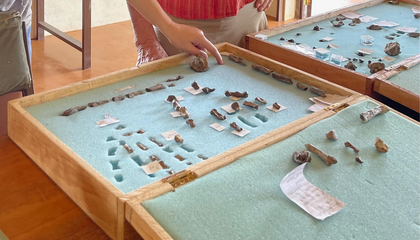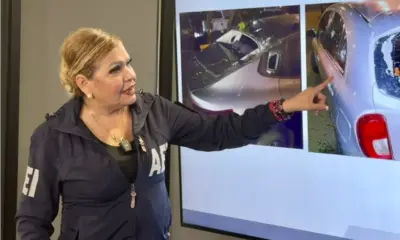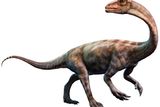Science
First Fossil Hand of P. Boisei Reveals Possible Tool Use

A recent study has unveiled the first fossilized hand attributed to P. Boisei, an ancient human relative, suggesting that this species may have possessed the ability to use tools. This discovery, led by researchers from the University of Kent and the National Museums of Kenya, provides critical insights into the behaviors of our early ancestors and their potential for toolmaking.
The fossil hand, found in East Africa, dates back approximately 1.8 million years. According to the research team, the anatomical structure of the hand indicates adaptations that align with tool use. This revelation contrasts with previous assumptions that only later hominins were capable of creating and utilizing tools, thereby challenging established narratives about human evolution.
Significance of the Discovery
The significance of this fossil extends beyond its age. The research indicates that P. Boisei, known for its robust jaw and large teeth suited for grinding tough plant materials, may have also engaged in activities requiring precision, such as tool manipulation. This finding supports the idea that the cognitive and physical capabilities necessary for toolmaking could have developed earlier in human history than previously thought.
Lead researcher Dr. Mark Thomas from the University of Kent stated, “This discovery opens up new avenues for understanding the behavioral adaptations of our ancestors. It suggests that the complexity of early hominin life may have been underestimated.” The fossil’s remarkable preservation allows for detailed analysis, affirming its potential influence on future studies of human evolution.
The discovery also raises questions about the ecological and environmental factors that may have prompted P. Boisei to develop tool use. Researchers hypothesize that changing climates and available resources could have driven adaptations in behavior, leading to toolmaking as a necessary survival strategy.
Implications for Understanding Human Evolution
The implications of this find are profound, as it challenges the long-held belief that only Homo habilis and later species were the first toolmakers. The study highlights the need to reassess the timeline of tool use within the hominin lineage. It also underscores the importance of multidisciplinary approaches in paleoanthropology, combining fossil analysis with insights from archaeology and evolutionary biology.
This fossil hand is part of a broader trend in paleoanthropological research that seeks to uncover the complexities of early human life. As new discoveries continue to emerge, they provide a clearer picture of how our ancestors adapted to their environments and the behaviors they developed for survival.
With the ongoing advancements in technology and research methods, further investigations of ancient fossils like that of P. Boisei may reveal additional surprises about the capabilities of our distant relatives. These revelations not only contribute to our understanding of human evolution but also enrich the narrative of our shared ancestry.
As researchers delve deeper into the past, the study of such remarkable finds will undoubtedly continue to reshape our understanding of what it means to be human, offering insights into the cognitive and physical evolution that has shaped our species.
-

 Business4 days ago
Business4 days agoUK to Finalize Stablecoin Regulations by 2026, Boosting Crypto Sector
-

 Business5 days ago
Business5 days agoU.S. and U.K. Target Cybercriminal Networks, Seize $15 Billion
-

 World4 days ago
World4 days agoMilitary Artillery Plan Sparks Safety Concerns Along California Highway
-

 Lifestyle5 days ago
Lifestyle5 days agoKISS OF LIFE’s Natty Dazzles in Micro-Shorts at Seoul Event
-

 World5 days ago
World5 days agoTrump Signals Reluctance to Sell Tomahawk Missiles to Ukraine
-

 Business5 days ago
Business5 days agoCalifornia to Eliminate All Plastic Bags from Stores by 2026
-

 Sports5 days ago
Sports5 days agoDomenico Doran’s Stellar Performance Leads Bishop Amat to Victory
-

 Entertainment5 days ago
Entertainment5 days agoLouisiana Senate Raises Concerns Over Medicaid Cuts Amid New Bill
-

 Entertainment5 days ago
Entertainment5 days agoUtah Communities Rally as Government Shutdown Strains Resources
-

 Sports5 days ago
Sports5 days agoTrade Low, Trade High: Key NHL Players to Consider Now
-

 Science2 days ago
Science2 days agoAncient Dinosaur Discovery in Argentina Reveals Evolutionary Insights
-

 Health2 days ago
Health2 days agoUncovering the Hidden Link Between Knee Pain and Hip Issues









